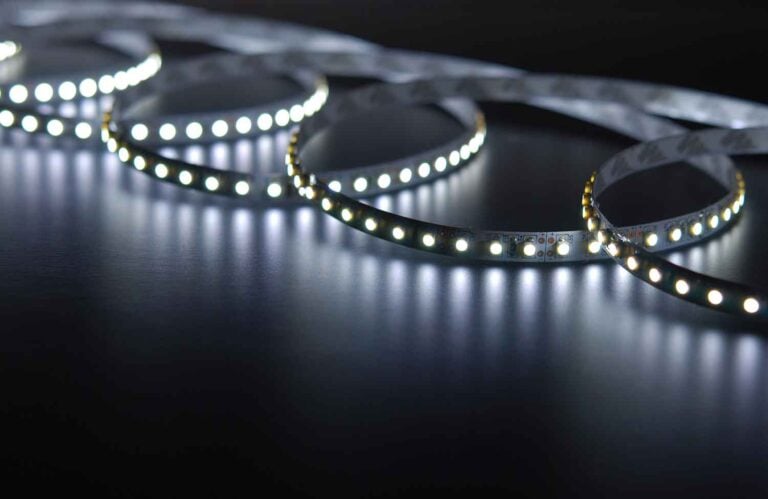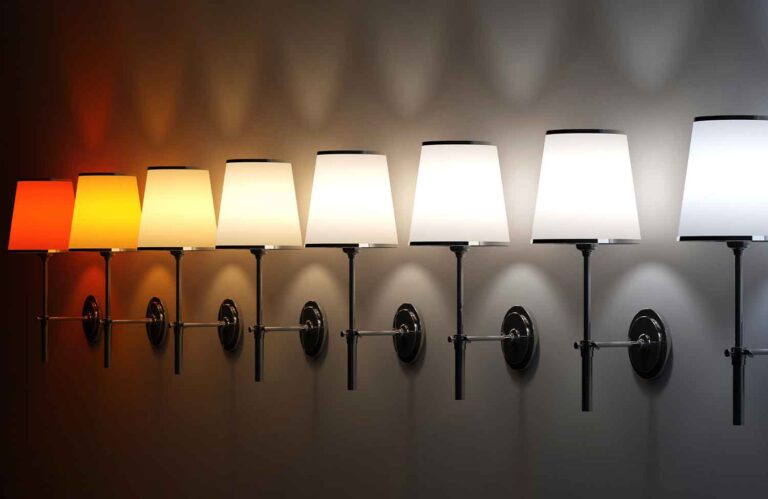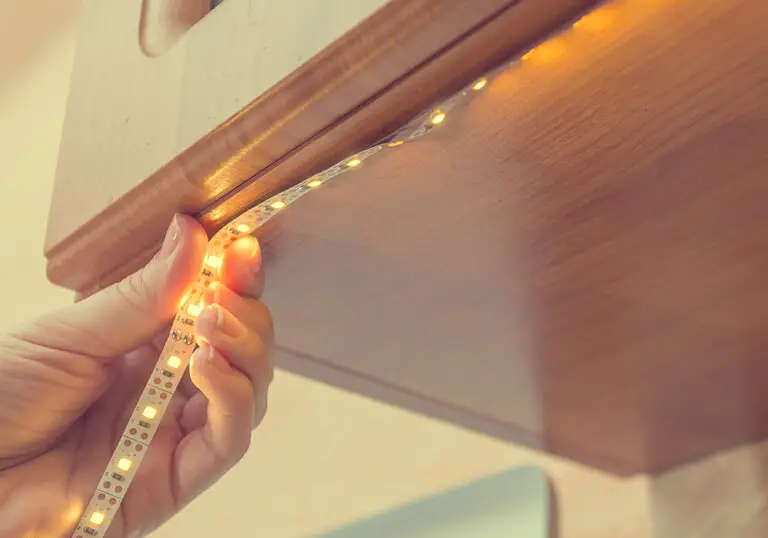Do LED Lights Give Off Heat?
Being a common concern with lighting fixtures, you may be wondering whether LED lights give off much heat. Modern LED light bulbs use a different technology to traditional bulbs to produce light; instead of wires and heated filaments, LED bulbs light up using light emitting diodes. In the absence of these traditional components, you could assume that LED lights do not give off heat. However, this would be an incorrect assumption to make.
LED lights do give off a small amount of heat as a byproduct of the electric current they use to run. Still, the heat that LED bulbs produce is minimal compared to the amount of heat produced by traditional bulb types. LED bulbs are the most energy efficient bulb type; they lose very little energy in the production of waste heat.
Do LED Light Bulbs Give Off Heat?
As they are an electrified object, LED bulbs do give off some heat. Any type of object or appliance that involves electricity will generate some amount of heat, including all types of bulbs. With that said, LED bulbs give off the least amount of heat compared to traditional types of bulbs due to their high energy efficiency.
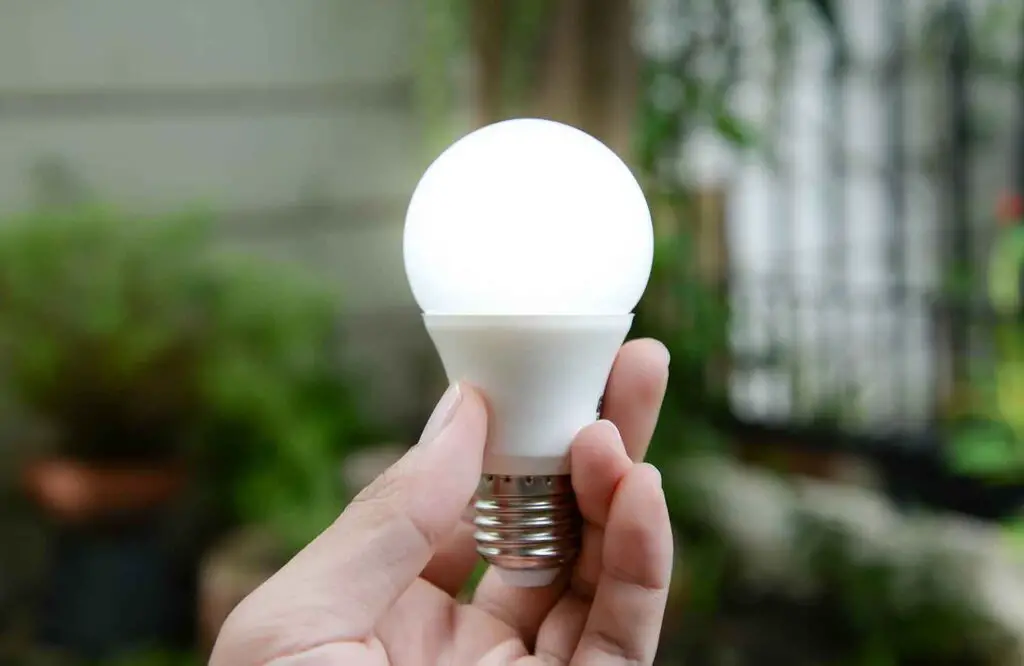
How Does an LED Bulb Give Off Heat?
When switched on, an LED bulb will give off heat as electricity runs through its components to power the light. The lighting mechanism in an LED bulb differs to that of other traditional types of bulbs; because of this, the ways in which traditional bulbs generate heat also differ to LEDs.
Incandescent bulbs utilise a wire filament that heats up to the point that it glows, causing the bulb to light. Halogen bulbs work in a similar way, containing additional gases that enhance the brightness of their light-producing filament. Fluorescent lights also contain certain gases that light up when they receive an electric current. As you can imagine, all of these traditional types of bulbs produce varying degrees of heat during their operation.
LED bulbs, on the other hand, do not involve heated filaments, wires, or gases to produce their light. Instead, they contain ‘light emitting diodes’ (LEDs); these diodes are controlled by a microchip and drivers that the LED bulb also contains. All of these components are powered by an electrical current. As electricity flows through the LED bulb’s components, it gives off heat like any other electrified appliance would.
Even so, the heat that an LED bulb produces is typically much lower than that of an incandescent or halogen bulb. Not only do they lack any significant heat-producing components, LED bulbs also contain ‘heat sinks’; these parts distribute any heat produced evenly around the whole bulb to keep its overall temperature at a minimum.
How Much Heat Does an LED Bulb Give Off?
In general, LED light bulbs give off a relatively low amount of heat. Their high energy efficiency means that LED bulbs produce little waste heat compared to traditional types of bulbs. Even so, the exact amount of heat an LED bulb will give off can vary depending on a few factors; these include the light output, energy efficiency, size, and location of the LED bulb in question.
Light Output of Bulb
LED bulbs with a higher light output will use more electricity to light up. And, the more energy that a bulb uses to light up, the hotter it will be. Because of this, LED bulbs with higher light outputs will give off more heat than those with lower outputs.
Energy Efficiency of Bulb
LED bulbs with a higher energy efficiency will produce less heat than those that are less energy efficient. For example, low-power LED bulbs produce minimal waste heat as they are the most energy efficient; any heat these bulbs do produce will quickly dissipate into the surrounding environment. Oppositely, brighter bulbs with a higher luminous flux will naturally generate more wasted heat. It’s important for the bulb to have a well-working integrated cooling system in order to be energy efficient.
Size of LEDs
The size of the LED light sources will also have an impact on how much heat the bulbs produce. Smaller LED light sources will actually generate more heat as they have less space for heat sinks; these are the components in LED bulbs that distribute heat around the bulb to lower its overall temperature. With more space for heat sinks, larger LED light sources tend to give off less heat.
Location of Light Fixture
The location of the LED light fixture is an additional factor that can influence the amount of heat it gives off; this will determine how well the LED light can dissipate its heat into the surrounding environment. For instance, recessed spotlights tend to dissipate their waste heat directly downwards into the room. Also, some of your LED lights may appear warmer than those in other rooms; LED lights in locations with a lower room temperature will feel warmer compared to the relative temperature of its surroundings.
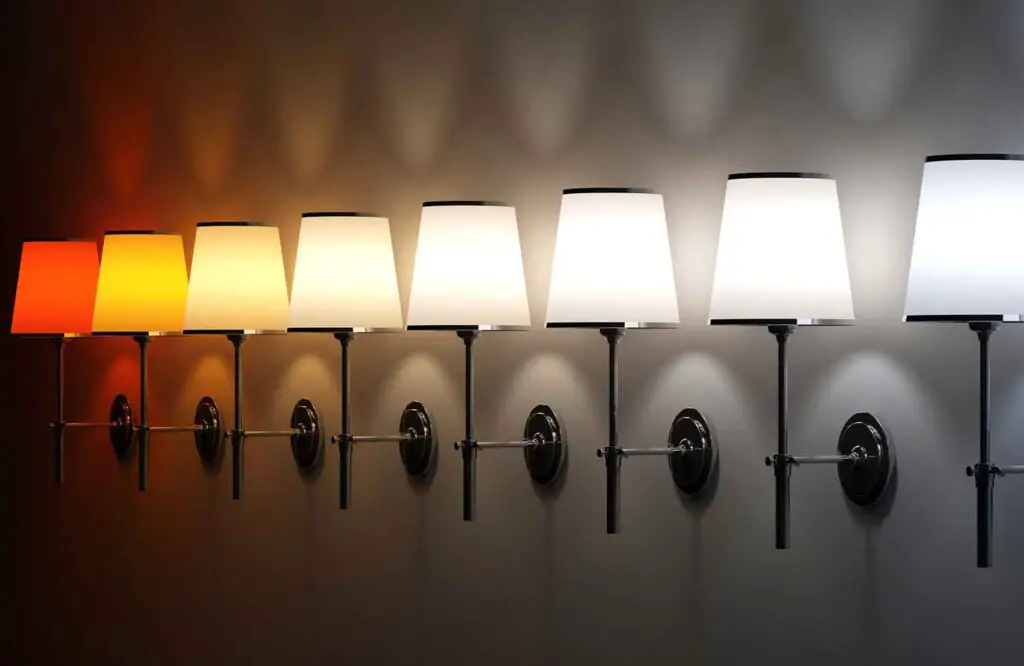
Comparing Heat Outputs of Different Light Bulbs
From LED bulbs, to incandescent, fluorescent, and halogen bulbs, the heat output of each type of bulb varies greatly. The heat output of a bulb could also be thought of as its energy efficiency; in other words, this represents how much energy the bulb wastes in producing heat.
We have summarised the heat outputs of each type of bulb in the table below.
| Type of Bulb | Energy Efficiency (i.e. Percentage of Energy Lost to Heat Production) |
| LED Bulbs | 20% to 50% |
| Fluorescent Tubes | 20% |
| Fluorescent Bulbs | 40% |
| Halogen Bulbs | 80% |
| Incandescent Bulbs | 85% |
As the table shows, the heat output of LED bulbs can vary between 20% and 50%. To reiterate, heat outputs vary between LED bulbs depending on factors like their light output, size, and location. This means that they aren’t universally the most energy efficient bulbs; fluorescent tubes and bulbs are consistently 20% and 40% efficient respectively.
However, fluorescent lighting is a much less preferable choice in terms of the light it actually produces. Fluorescent lighting tends to create a rather ‘cold’ ambience; these lights also tend to flicker, making them visually unpleasant and potentially harmful to the health of those prone to migraines. LED bulbs instead produce clear, unfaltering light, coming in different shades from true white to warm white. They’re therefore a preferable choice over fluorescent bulbs regardless of discrepancies in energy efficiency and heat output.
Comparing Lifespans of Different Light Bulbs
All types of light bulbs will come with a lifespan due to the heat that their components produce. In electrical objects like bulbs, the heating and cooling effect of their electrical components will gradually wear them down. Looking at the lifespan of each bulb is therefore another way to assess the amount of heat that each one gives off.
Refer to the table below to understand the typical lifespan in hours of each type of bulb.
| Type of Bulb | Typical Lifespan in Hours |
| LED Bulbs | Between 25,000 and 50,000 hours |
| Fluorescent Bulbs | 8,000 hours |
| Halogen Bulbs | 2,000 hours |
| Incandescent Bulbs | Between 750 and 1,200 hours |
As you can see, LED bulbs have a significantly longer lifespan compared to fluorescent, halogen, and incandescent bulbs combined. As the light-producing components in LED bulbs give off little heat, these bulbs last the longest; some LED bulbs can run for up to 50,000 hours before they begin to deteriorate.
Comparatively, halogen and incandescent bulbs will both burn out a lot sooner, typically only lasting up to 2,000 hours of use. With repeated usage, the heated filament in these types of bulbs will gradually wear down; the components in these bulbs will wear out more quickly due to the increased amount of heat that they produce.
Comparing Light Outputs of Different Light Bulbs
As we’ve now explained, LED light bulbs give off less heat and last longer than the majority of other bulb types. From this information, you may assume that LED bulbs must also produce less light, given that they generate less heat. This, however, is not the case; LED bulbs can produce a brighter light using less wattage than their traditional counterparts.
The following table shows the amount of energy in watts that each bulb type uses to produce the same level of brightness in lumens.
| Bulb Brightness (Lumens) | LED Bulb Energy Usage (Watts) | Fluorescent Bulb Energy Usage (Watts) | Incandescent Bulb Energy Usage (Watts) |
| 500 | 6 – 7 | 12 | 40 |
| 750 to 850 | 8 – 10 | 18 | 60 |
| 1000 to 1400 | 12 – 13 | 22 | 75 |
| 1500 to 1700 | 15 – 20 | 30 | 100 |
| 2700 | 25 – 28 | 50 | 150 |
LED bulbs have a much lower energy usage across the board compared to fluorescent and incandescent bulbs. As shown in the table above, a 10 watt LED bulb will produce the equivalent brightness to a standard 60 watt incandescent bulb; the LED bulb uses less energy to produce the same amount of light, while also generating less heat.
These discrepancies can again be explained by the differing components that each bulb uses to produce light. As we’ve already discussed, incandescent bulbs light up using a heated filament; this mechanism requires more electricity to run and consequently gives off more heat in the process. LED bulbs instead light up using diodes, which draw less power and generate less heat, while emitting the same brightness.


